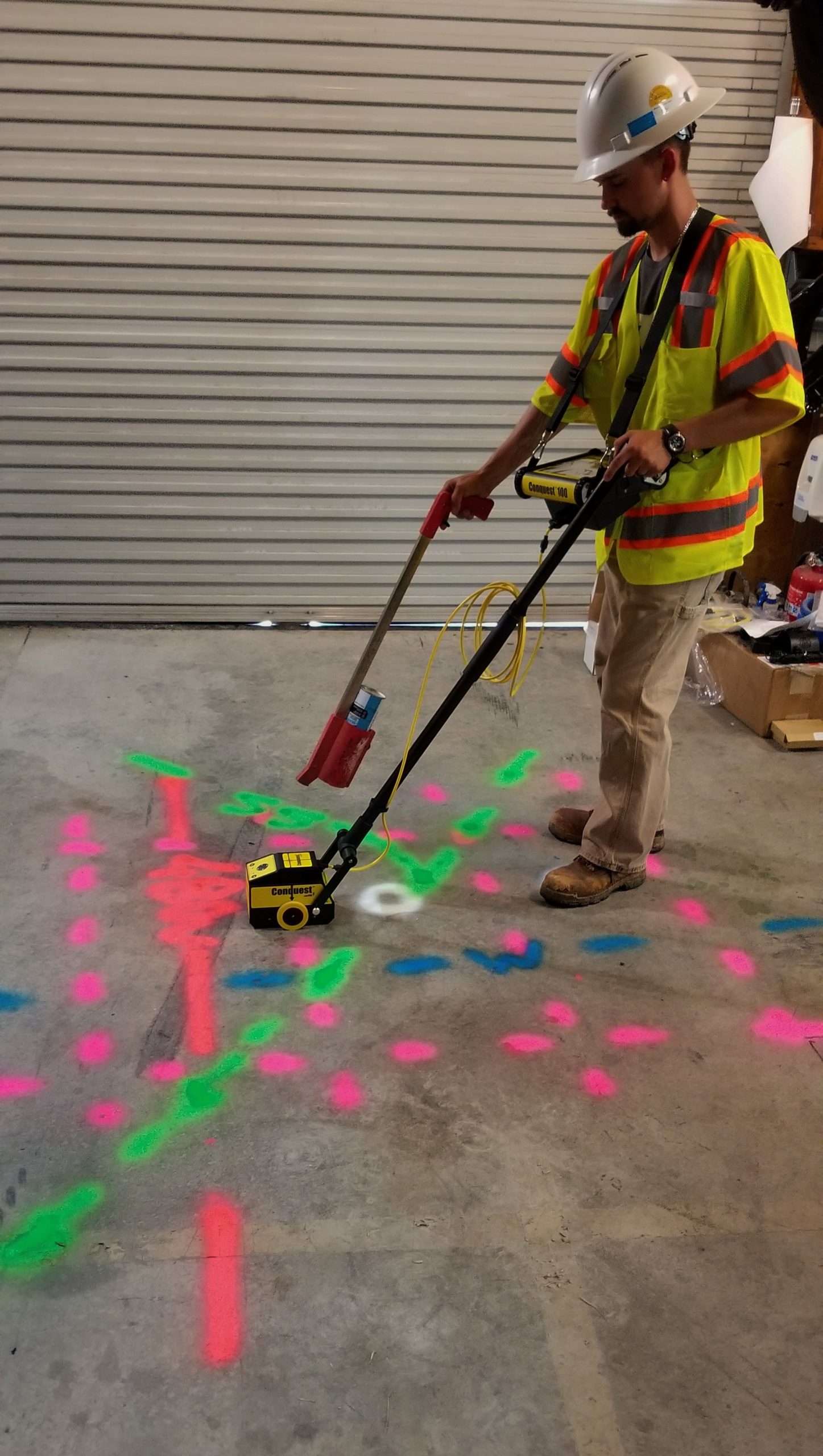Explore RainierGPR Service Areas for Professional Concrete Scanning
Explore RainierGPR Service Areas for Professional Concrete Scanning
Blog Article
Enhancing Task Preparation and Execution Through Advanced Concrete Scanning Techniques
In the world of project planning and execution, precision and foresight are important components that can make the difference between success and setbacks. Advanced concrete scanning strategies have arised as a sophisticated tool established to boost the requirements of project management within the building and construction industry. By using advanced modern technology, these methods use a look right into the architectural stability of a structure even before the initial block is laid. The implications of such advancements are extensive, guaranteeing a paradigm change in exactly how jobs are approached and provided.
Benefits of Advanced Concrete Scanning Strategies

Improved Accuracy in Task Assessments
Enhancing project analyses with innovative concrete scanning techniques significantly increases the accuracy and integrity of building evaluations. By using innovative scanning innovations such as ground-penetrating radar (GPR) and 3D imaging, job groups can currently obtain detailed insights into the problem of concrete structures, recognizing prospective problems or weaknesses that may not show up to the nude eye. This enhanced degree of precision in task assessments makes it possible for building and construction specialists to make more enlightened decisions relating to repair service and upkeep approaches, leading to improved overall project end results.
Furthermore, the boosted accuracy in project assessments attained with sophisticated concrete scanning techniques aids in decreasing the risk of unexpected concerns throughout the building stage. By proactively detecting covert abnormalities within concrete frameworks, such as rebar deterioration or voids, task teams can resolve these problems at an early stage, avoiding pricey hold-ups and remodel later on in the project lifecycle. Inevitably, the enhanced precision in project analyses assisted in by sophisticated concrete scanning techniques adds to greater efficiency, cost-effectiveness, and top quality in construction projects.
Very Early Identification of Structural Difficulties
Early discovery of architectural challenges plays a vital function in guaranteeing the stability and safety of concrete structures throughout the building and construction procedure. Identifying potential problems at a beginning enables timely treatment, preventing pricey rework, timetable hold-ups, and security hazards. Advanced concrete scanning methods, such as ground-penetrating radar (GPR) and 3D imaging, make it possible for project groups to reveal concealed defects, voids, reinforcement design visit the site discrepancies, and various other abnormalities that might jeopardize the framework's stability.
By implementing these strategies during the planning and implementation stages, building professionals can proactively attend to structural obstacles prior to they escalate right into major troubles. For instance, identifying insufficient concrete cover over support bars early on can protect against corrosion and structural weakening in the lengthy run - RainierGPR Service Areas. Moreover, recognizing variations in concrete density or density can help optimize product usage and guarantee consistent toughness properties across the framework

Ultimately, very early identification of architectural difficulties with advanced concrete scanning not only boosts the general top quality and toughness of the building however likewise adds to a safer constructed atmosphere for owners and individuals.
Enhanced Precaution in Construction
The implementation of durable security methods is necessary in the building and construction sector to alleviate threats and safeguard the wellness of workers and stakeholders. To boost safety and security steps, building and construction business are progressively adopting technological improvements such as wearable devices that check employees' important indicators and find possible wellness issues in real-time. By prioritizing safety with the unification of advanced modern technologies and extensive training programs, construction tasks can substantially lower mishaps and create a safe functioning environment for all involved.
Streamlining Job Monitoring Processes
To optimize functional performance and ensure job success in the building and construction sector, a concentrate on simplifying task management procedures is necessary. By implementing effective task administration procedures, building jobs can minimize hold-ups, minimize prices, and boost total productivity. One essential aspect of improving project management is useful link using advanced innovations such as Building Info Modeling (BIM) software, which enables real-time cooperation, clash discovery, and exact job organizing. Additionally, the fostering of cloud-based job management systems enables seamless interaction amongst group participants, instantaneous access to task data, and the capability to track development in real-time.

Final Thought
To conclude, the usage of innovative concrete scanning strategies supplies various advantages for project preparation and implementation. These strategies offer improved precision in task assessments, very early identification of architectural obstacles, enhanced security measures in building, and streamlined job monitoring procedures. Incorporating these techniques into job workflows can inevitably cause a lot more effective and effective results in construction projects.
Ultimately, the enhanced accuracy in project analyses assisted in by sophisticated concrete scanning strategies contributes to better efficiency, cost-effectiveness, and top quality in construction tasks. RainierGPR Service Areas.
To optimize functional performance and make certain job success in the construction sector, an emphasis on simplifying project monitoring processes is vital. By applying reliable job management processes, building advice projects can lessen delays, minimize expenses, and enhance total efficiency. By streamlining job administration processes via technology combination, clear interaction, and data-driven strategies, construction jobs can attain greater performance, cost-effectiveness, and successful end results.
These techniques give better accuracy in task assessments, very early identification of architectural obstacles, improved safety procedures in building, and structured job administration procedures.
Report this page